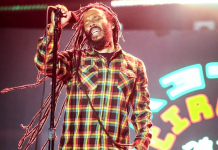
Flickering candles and lights everywhere are a spectacular sight during the season of Diwali in Trinidad. The name Diwali, made popular in certain Caribbean circles by the dancehall riddim featuring Sean Paul’s “Get Busy” rather than exposure to traditions in this sacred annual festival of Lights, in fact has deep South-Asian roots. Hinduism is the third most practiced religion in Trinidad and Tobago with around 40% of the population being Indo-Trinidadian, resulting in a number of celebrated holidays, including Diwali, coming from Hindu traditions.
Most Hindu holidays typically follow the 12-month Hindu lunar calendar in order to preserve the original cultural traditions. Many of these lunar months overlap the January-December model, thus the five-day Diwali celebration typically takes place in late October and November. The celebration starts on the 13th day of the lunar month of Ashwin — the month which begins on the first full moon after the autumn equinox — and ends during the early half, or “light half,” of the lunar month Kartika.
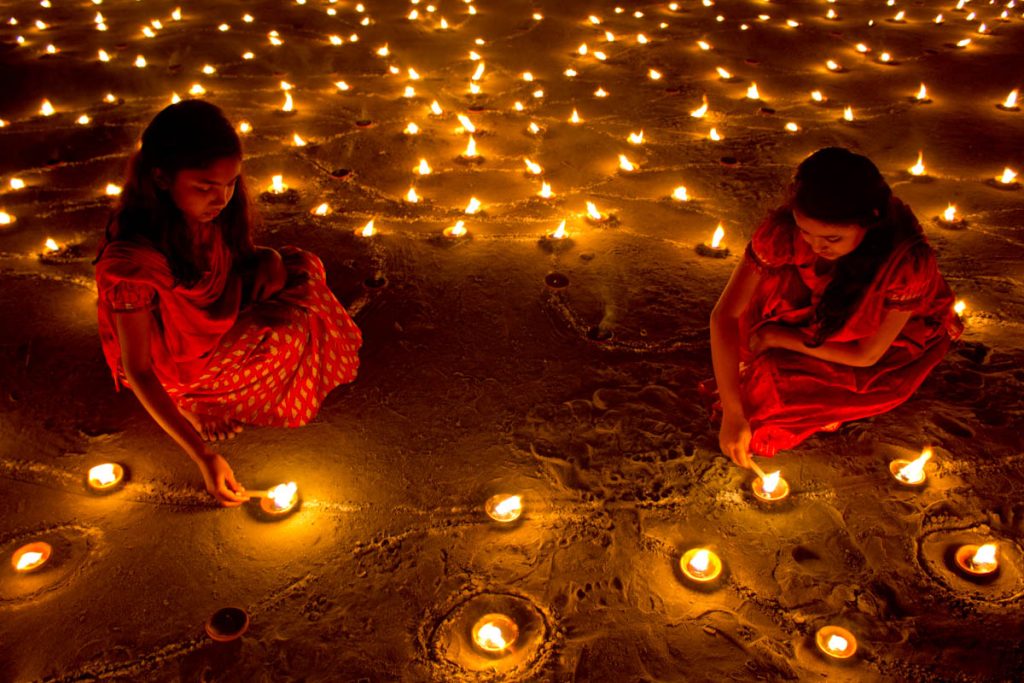
The Mythology Surrounding Diwali
Candlelight celebrations, fireworks and sparklers, and paper lanterns floating above the dark night sky — this is Diwali, a festival of light celebrating the triumph of light over darkness.
According to mythology, Diwali, sometimes spelled Divali, is a celebration of Lord Rama’s victory over Ravana, a demon king, after a 14 year exile. Lord Rama is a reincarnated form of the Hindu god Vishnu, known as “The Protector of Good.” Other traditions celebrate the time when Durga, or Mother Goddess, saved the gods from a half demon half buffalo creature named Mahishasur.
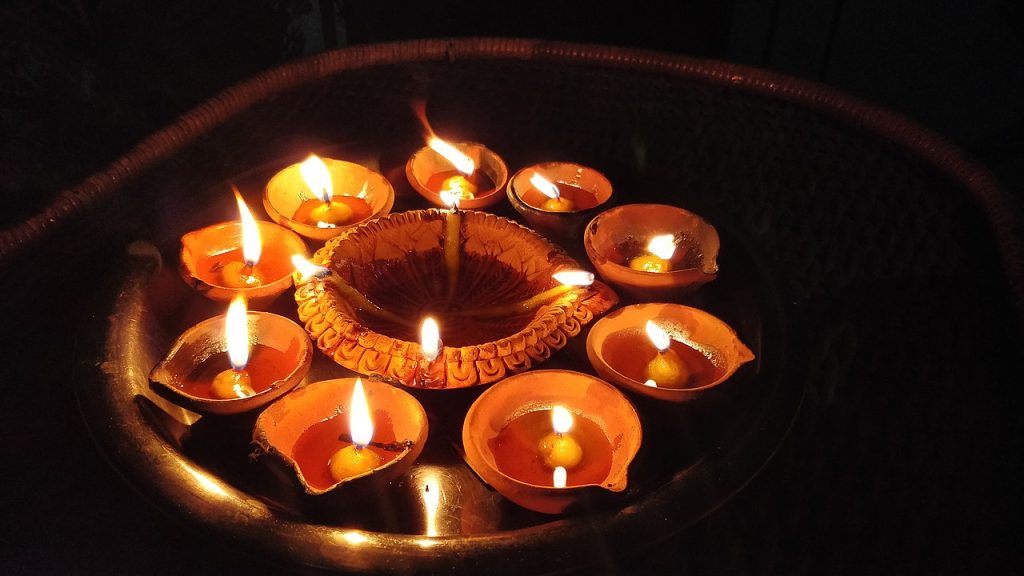
Both of these battles show that goodness and light prevail over evil and darkness and out of these lessons, light has become the cornerstone of all Diwali celebrations. Diyas, or clay lamps, known to be a symbol of good luck, can be seen in many homes and these and other forms of light are traditionally used to rid homes and their inhabitants of any metaphorical darkness, instead welcoming wisdom and good fortune. Lights are also used to pay respect to Rama’s long trip back home and the diyas are a guide to aid in lighting the path for his return.
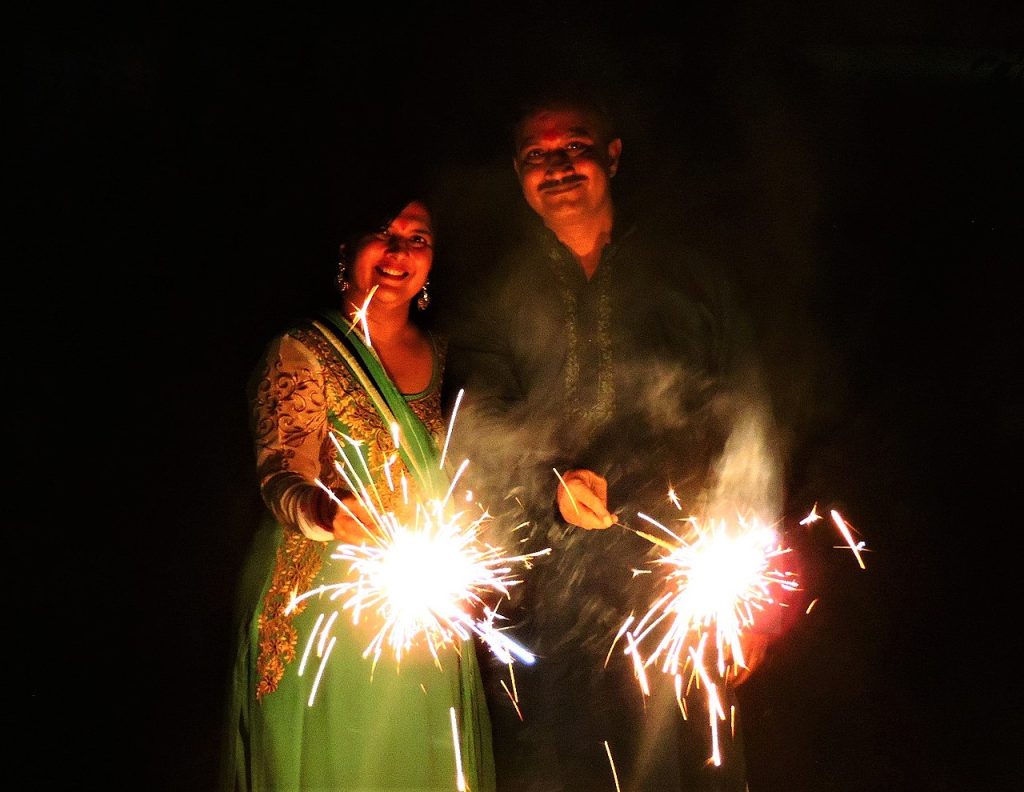
Diwali in Trinidad
In Trinidad, Diwali is a time for families to come together, catch up and celebrate. Introduced to Trinidad and Tobago by East Indian indentured servants and laborers in the mid 1800s, Diwali is now a national holiday with celebrations held all over the island. Traditionally, Hindus across Trinidad and Tobago will visit the National Council of Indian Culture (Divali Nagar Site) in Endeavour in the days leading up to Diwali to pray and worship the deities.
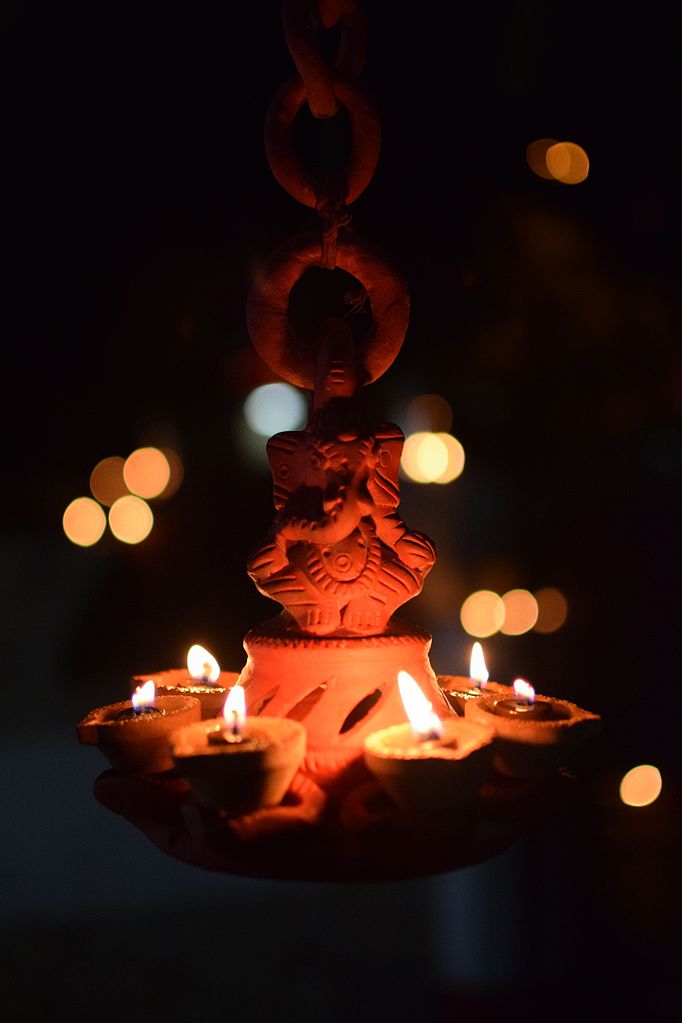
In the days or weeks leading up to the festival of lights, Hindus typically participate in fasts, abstaining from meat, and offer prayers to Lakshmi, daughter of the Mother Goddess Durga, known to bring material and spiritual wealth. Hindus in Trinidad also take the time to do a deep cleaning of their homes, clothes and any spaces that need some upkeep. Prayers and reflection are constant throughout the week-long celebration and on the observed day of Diwali families and friends all participate in the ritual of lighting diyas at dusk.
Afterwards, there is a feast of authentic food, drink and dessert. Some signature Diwali dishes in Trinidad consist of roti, curried mango, curried Channa and Aloo (chickpeas with potatoes), sweet rice, sweet cake and barfi.
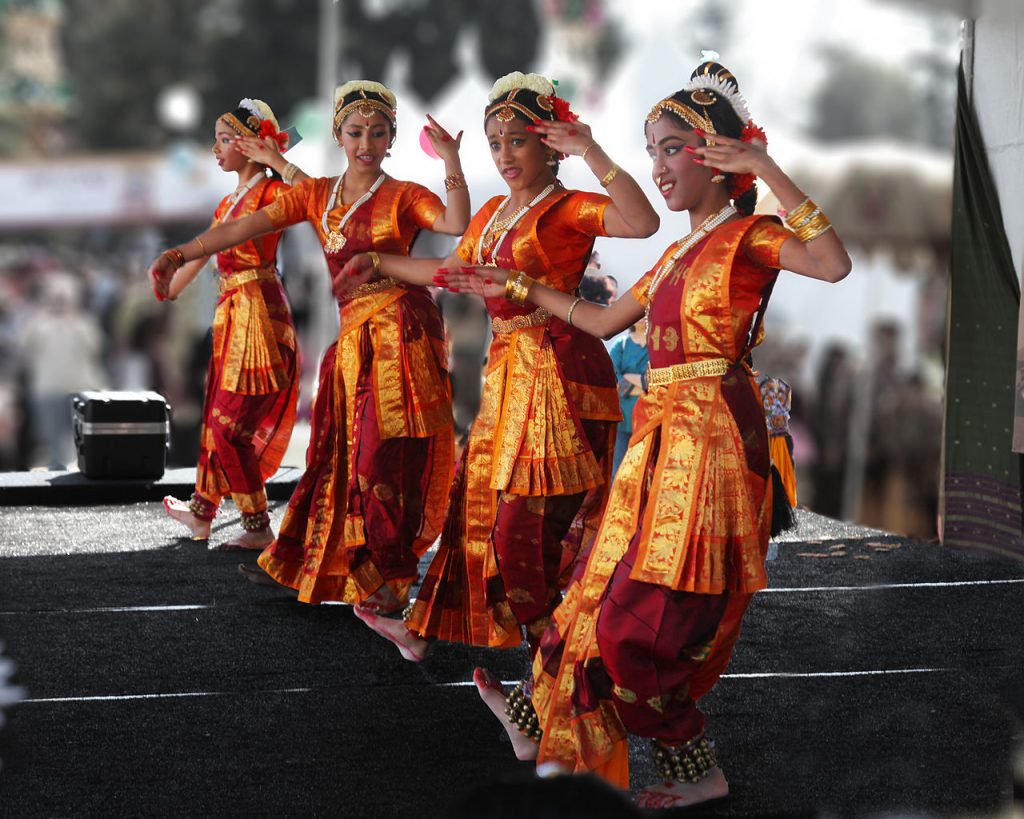
Another tradition for Diwali in Trinidad is the Ramleela, a ten day reenactment play of the ancient epic of Ramayana which chronicles Rama’s life, exile and return. The play is just another way to respect and remember the power of goodness over evil.
To learn even more about Indo-Caribbean culture, check out this great article that dives into heritage, land and identity and a changing landscape.



















